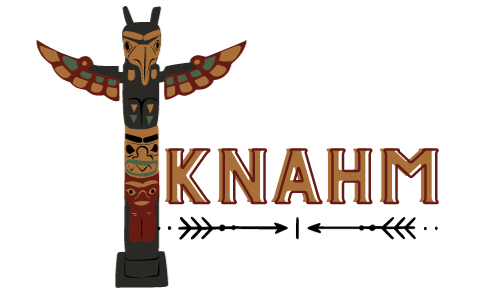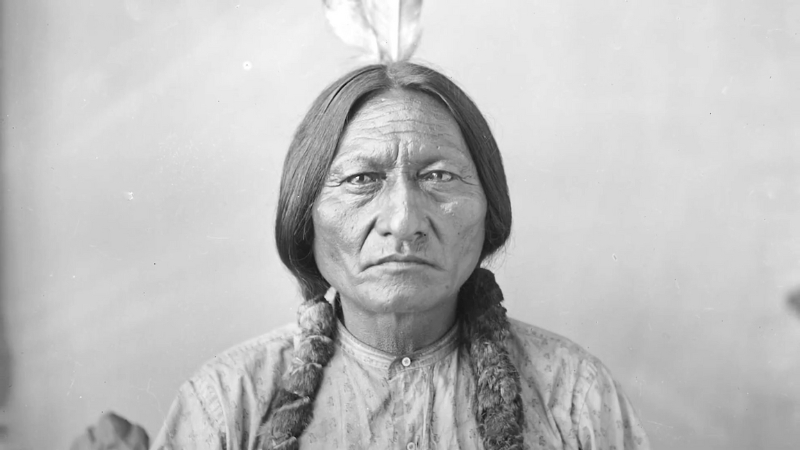Sitting Bull was more than a warrior or a chief; he was a symbol of unwavering defiance, wisdom, and spiritual strength. Among the Lakota people, he was known as Tatanka Iyotake, a man of vision who carried the weight of his nation during one of the most turbulent chapters in North American history.
His leadership spanned far beyond the battlefield. It was rooted in a deep spiritual calling to protect the Lakota way of life, their sacred lands, and their right to remain free.
From his early life on the Northern Plains to his role in uniting tribes at the Battle of the Little Bighorn, and finally to his tragic death at Standing Rock, Sitting Bull’s story is not only about conflict.
It is about endurance, cultural survival, and moral conviction. His legacy continues to inspire Indigenous nations and all who stand against injustice.
Making of a Leader
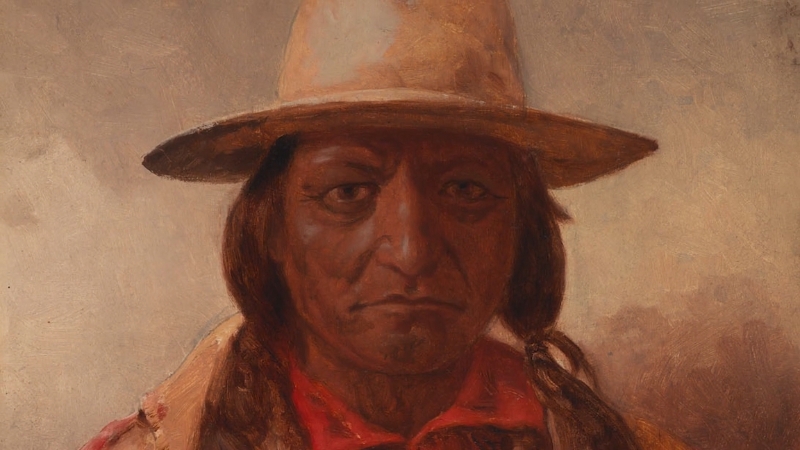
Sitting Bull was born around 1831 on the Grand River in what is now South Dakota, belonging to the Hunkpapa band of the Lakota Sioux. As a child, he was called Jumping Badger.
His father, Returns-Again, was a respected warrior, and his mother, Her-Holy-Door, nurtured him with teachings about the spirit world.
He showed early signs of discipline and seriousness. At just ten years old, he accompanied a war party and struck his first coup, touching a Crow warrior in battle without killing him, an act considered braver than taking a life.
This earned him the name Tatanka Iyotake, or Sitting Bull, for his strength and stability like a buffalo that will not move.
The Lakota world he grew up in was rich in freedom. The Great Plains stretched endlessly, the buffalo roamed in millions, and the people moved with the rhythm of the seasons.
Yet by the time Sitting Bull reached adulthood, that balance was beginning to crumble under the pressure of white expansion, broken treaties, and army forts rising on their ancestral lands.
Spiritual Leadership and the Visionary Path
Sitting Bull was not only a warrior but a Wičháša Wakan, a holy man. His strength came from spiritual vision, dreams, and ritual fasting. He often led the Sun Dance, a ceremony of sacrifice and renewal that connected the people with Wakan Tanka, the Great Spirit.
His most famous vision came in 1876, when U.S. troops advanced deep into Lakota territory. During a Sun Dance, he saw soldiers falling into the Lakota camp like grasshoppers from the sky, foretelling victory over the invading army.
Weeks later, that vision came true at the Battle of the Little Bighorn.
Aspect
Role in Lakota Life
Sitting Bull’s Practice
Vision Quest (Hanblečeya)
Spiritual guidance through isolation and fasting
Received prophecies of the people’s fate
Sun Dance
Renewal of life and unity
Led ceremonies for strength and victory
Pipe Ceremony
Connection to the Creator
Used before battles and major decisions
Dream Interpretation
Reading symbols from visions
Guided tribal actions through spiritual insight
Sitting Bull’s faith anchored his people. To him, resistance was not just political, it was sacred.
The Fight for the Plains
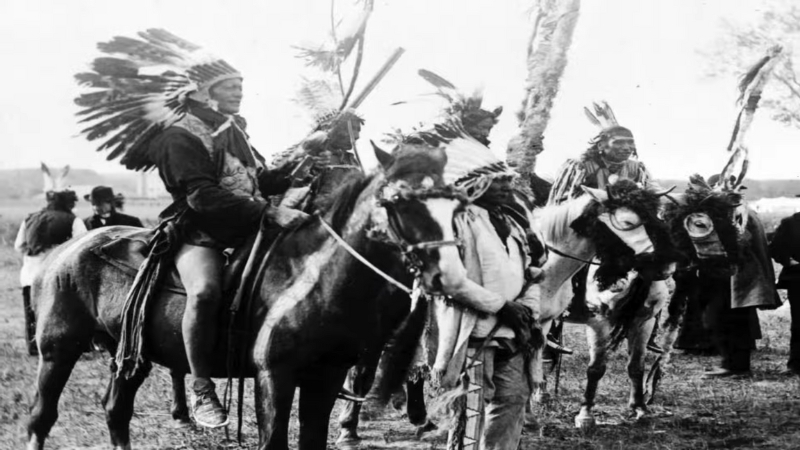
By the 1860s, the Lakota faced growing threats from U.S. settlers and the military. The 1868 Treaty of Fort Laramie had promised that the Black Hills, the spiritual heart of the Lakota world, would remain theirs “forever.” But forever ended when gold was discovered there in 1874.
Sitting Bull refused to sign any treaty that would surrender Lakota sovereignty. He declared, “I do not want to sell or lease any part of our land. Not even as much as this.” His defiance attracted warriors and leaders from many tribes, Cheyenne, Arapaho, and others who shared his cause.
In 1876, when General George Armstrong Custer led his 7th Cavalry into the region, Sitting Bull and his followers gathered along the Little Bighorn River in Montana. Among them were legendary fighters like Crazy Horse and Gall.
The Battle of the Little Bighorn
On June 25, 1876, the U.S. Army attacked the Lakota-Cheyenne camp. Custer underestimated their numbers; there were more than 2,000 warriors. The fighting lasted only hours. Custer and more than 200 soldiers were killed.
Though Sitting Bull did not personally fight in the battle, his role was spiritual; his leadership and prophetic vision were central to the victory. The event, often called Custer’s Last Stand, became the most famous Native American victory in American history.
Date
Event
Outcome
June 25–26, 1876
Battle of the Little Bighorn
U.S. 7th Cavalry defeated; Custer killed
1877
U.S. retaliation campaigns
Many Lakota bands were forced to surrender
1881
Sitting Bull’s surrender
Exile and surveillance under U.S. control
The triumph at the Little Bighorn was short-lived. The U.S. government intensified its campaign against all Native resistance. Within a year, the buffalo were nearly exterminated, food supplies collapsed, and many tribes were driven to reservation life.
Exile in Canada and the Hard Return
After the Little Bighorn, Sitting Bull led his followers north into Canada, seeking refuge near Wood Mountain in Saskatchewan. There, he met the Métis and other displaced peoples.
Though the Canadian government offered peace, food was scarce, and buffalo herds vanished.
He resisted surrender for nearly five years. By 1881, starvation and exhaustion forced him to return to the United States.
He handed his rifle to the commanding officer at Fort Buford, saying, “I wish it to be remembered that I was the last man of my tribe to surrender my rifle.”
Even after surrendering, Sitting Bull never yielded in spirit. He lived under constant watch by the Indian Bureau and military, still regarded as a symbol of rebellion.
Later Years: From Resistance to Reservation
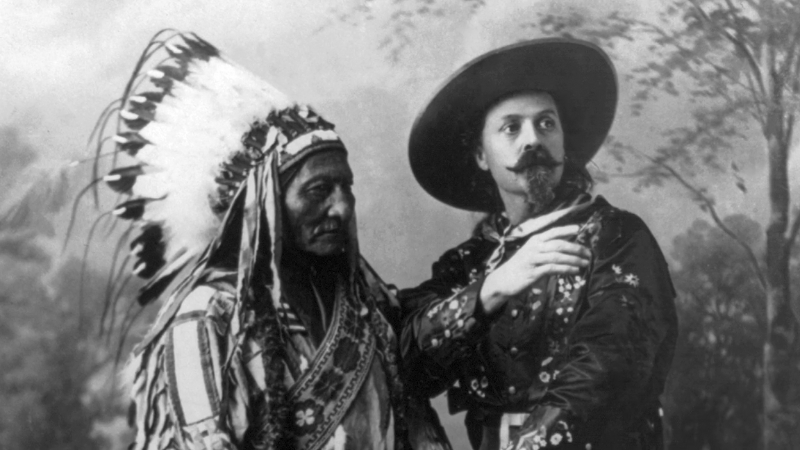
By the late 1880s, Sitting Bull had become both a prisoner and a celebrity. He toured briefly with Buffalo Bill Cody’s Wild West Show, earning money and attracting crowds fascinated by the “Indian chief who defeated Custer.”
Yet he grew disillusioned, realizing that audiences wanted spectacle, not understanding. He returned home to Standing Rock Reservation.
At Standing Rock, he continued to advocate for his people’s rights. He opposed the Dawes Act, which divided communal lands into individual allotments, undermining the foundation of Lakota society.
He also encouraged education and spiritual revival among his people, insisting they remain proud of who they were.
The Ghost Dance and His Death
View this post on Instagram
In 1890, a new spiritual movement swept across Native reservations, the Ghost Dance. It promised that if Indigenous people lived purely and danced, their ancestors would return, the buffalo would come back, and the white man’s dominance would end.
Sitting Bull did not join the Ghost Dance directly, but he defended the right of his people to practice it. U.S. authorities saw it as a rebellion.
On December 15, 1890, Indian police were sent to arrest him. A confrontation broke out at dawn. Shots were fired, and Sitting Bull was killed outside his cabin along the Grand River.
He was 59 years old. Two weeks later, at Wounded Knee Creek, more than 250 Lakota men, women, and children were massacred by U.S. troops, a tragic coda to the era of open resistance.
Legacy: Spirit of a Nation
Sitting Bull’s life stands as one of moral clarity in a time of chaos. His leadership was not based on conquest but on the protection of land, people, and spiritual identity. To his people, he was not defeated; he lived and died as a man faithful to his beliefs.
Aspect of Legacy
Meaning
Continuing Impact
Cultural Identity
Defender of Lakota sovereignty
Source of unity for Native activists
Spiritual Vision
Balance between courage and humility
Inspiration for cultural revival
Political Resistance
Refusal to surrender sovereignty
Symbol in modern Indigenous rights movements
Moral Example
Integrity under oppression
Model of leadership and faith
Today, Sitting Bull’s story continues to resonate. His descendants still live near Standing Rock, where his name remains sacred. His image appears in art, literature, and protest banners, reminding the world that Native resistance is not a thing of the past; it is a living spirit.
Conclusion: The Enduring Power of Tatanka Iyotake
@nativeamerican.history The history of Sitting Bull. Native American Native American Native American History Native American Insustice Native American Land Native American Chiefs Native American Warriors Native American Reservations Native American Land Pontiac Native American Native American Women Native American Mother Native American Women Heros Native American Names Native American Singing Native American Music #nativeamericans #americanindian #nativeamericanhistory #nativeamerican #nativeamericantribes #nativeamericanheritage #nativeamericantiktok #sittingbull #chiefsittingbull #lakota #lakotasioux ♬ original sound – NativeAmerican
Sitting Bull’s life was a bridge between two worlds, one rooted in the freedom of the buffalo plains, the other defined by colonial power and displacement. He never adapted his values to survive; he carried them forward as truth.
He once said, “I have killed, robbed, and injured too many white men to believe in good fellowship with them, but I am willing to be friends with any man who is just.”
That sentiment captures his essence: defiant, honest, and bound by principle. Sitting Bull’s story remains not a tragedy but a testament, a reminder that leadership grounded in spirit and justice can outlast empires.
Throughout his life, the Lakota ideal of balance, between courage and compassion, resistance and peace, endures. Sitting Bull’s voice still echoes across the plains, in every call for dignity, sovereignty, and the right to live free upon the earth.
